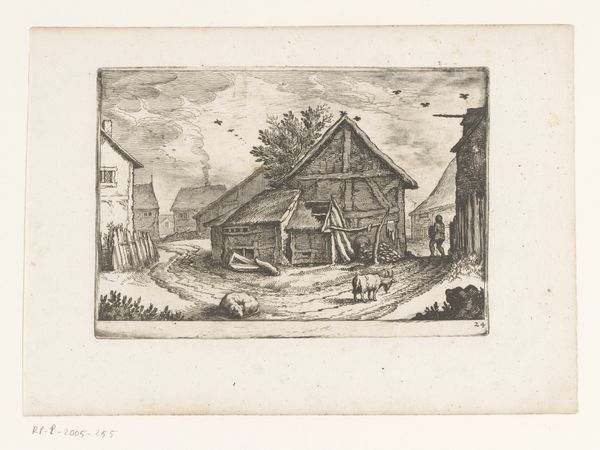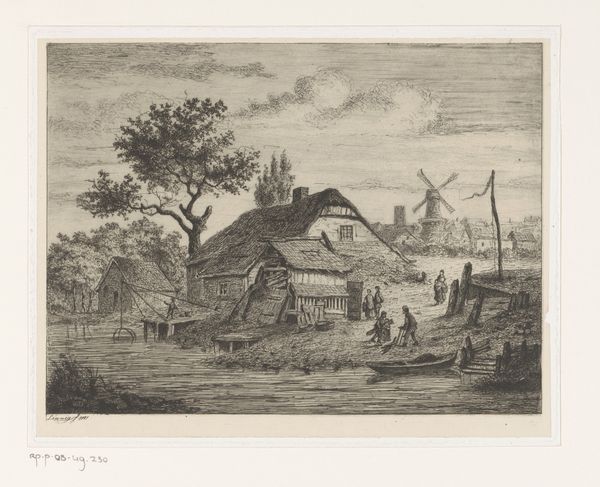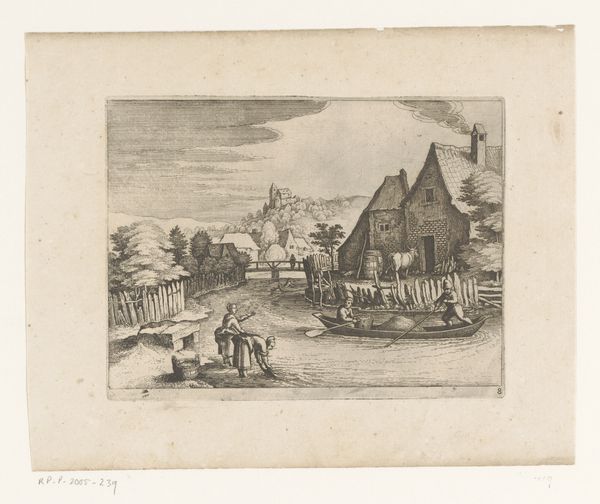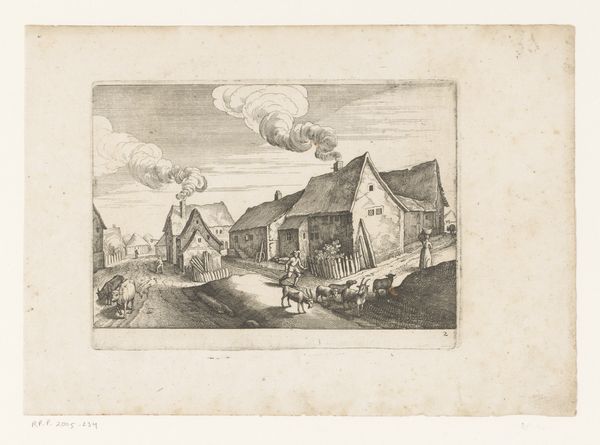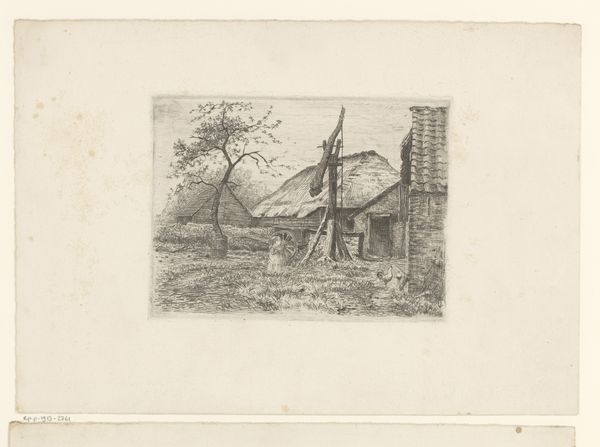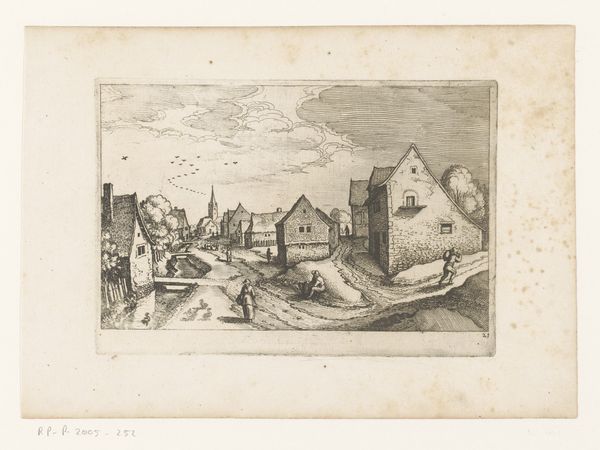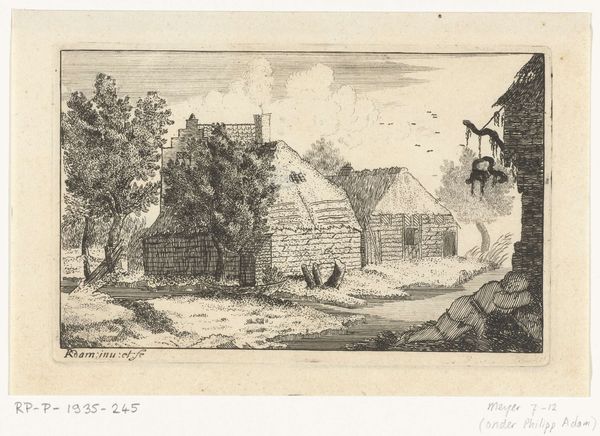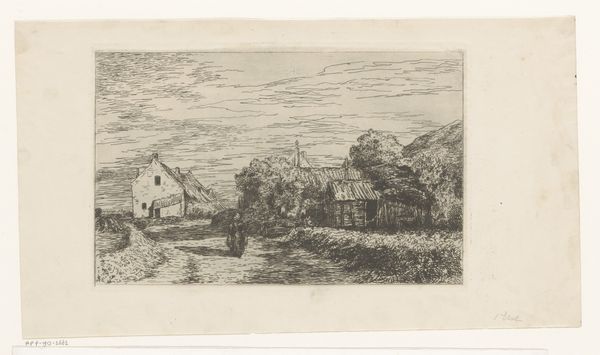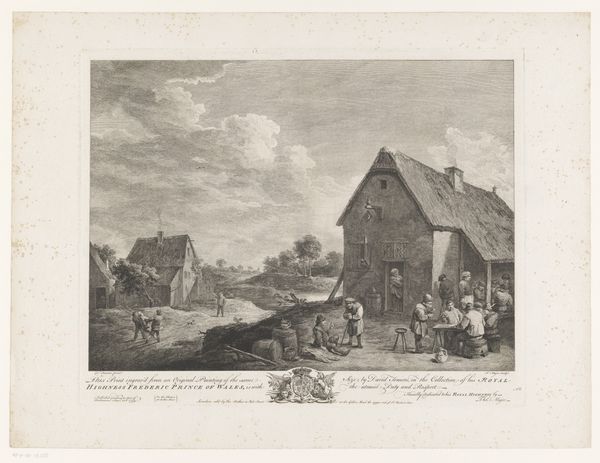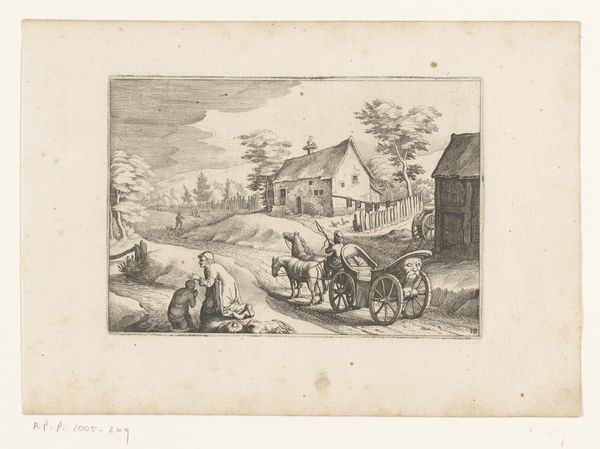
print, engraving
#
baroque
#
dutch-golden-age
# print
#
landscape
#
form
#
line
#
genre-painting
#
engraving
#
realism
Dimensions: height 120 mm, width 165 mm
Copyright: Rijks Museum: Open Domain
Curator: At first glance, the detail is striking. It feels almost photographic, yet so obviously crafted. Editor: We're looking at "Boeren huizen met geiten en kippen," or "Farmhouses with Goats and Chickens," an engraving made around 1620 by Matthäus Merian the Elder. It’s currently housed right here in the Rijksmuseum. Curator: An engraving then? Interesting. It's so clean, especially considering the bustling scene. What's captured seems to be a momentary pause in an otherwise chaotic agrarian setting. Note the sharp lines forming each element. How did Merian achieve such detail working with those tools? Editor: Well, let's consider the Dutch Golden Age. This wasn't just about representing reality. Think about the economic context: engravings like this circulated widely. The precision, the details – they showcased not only Merian’s skill, but also a vision of rural life consumed by urban audiences. Curator: So the market and consumption of these images influenced their materiality? The print's function drove its form, depicting rurality, rather than reflecting lived, agrarian labor in truth? Editor: Precisely! These were commercial ventures as much as artistic ones. Moreover, depicting these animals and houses served a cultural role, creating a collective fantasy for townspeople about the natural landscape around them. Curator: I'm thinking about the process involved in translating this scene onto a copper plate and what it afforded, from image and function. Also the texture… the contrast between light and dark achieved via carefully etched lines, influencing perception, given that his viewership perhaps would not have had ready access to rural spaces like this… It really highlights a kind of artmaking born from labor. Editor: The accessibility aspect of printmaking opens it up for mass appeal and helps form a national consciousness too. A tangible piece reflecting broader Dutch identity. I'd be interested to know who purchased his prints. It makes you question their values, knowing these images perpetuated romantic ideas about the landscape. Curator: Absolutely. It's tempting to delve deeper into this artist, their techniques and this period now, beyond just the charming chickens. Editor: I agree. Thinking about audience and purpose, versus immediate appreciation, reframes the artwork altogether.
Comments
No comments
Be the first to comment and join the conversation on the ultimate creative platform.
